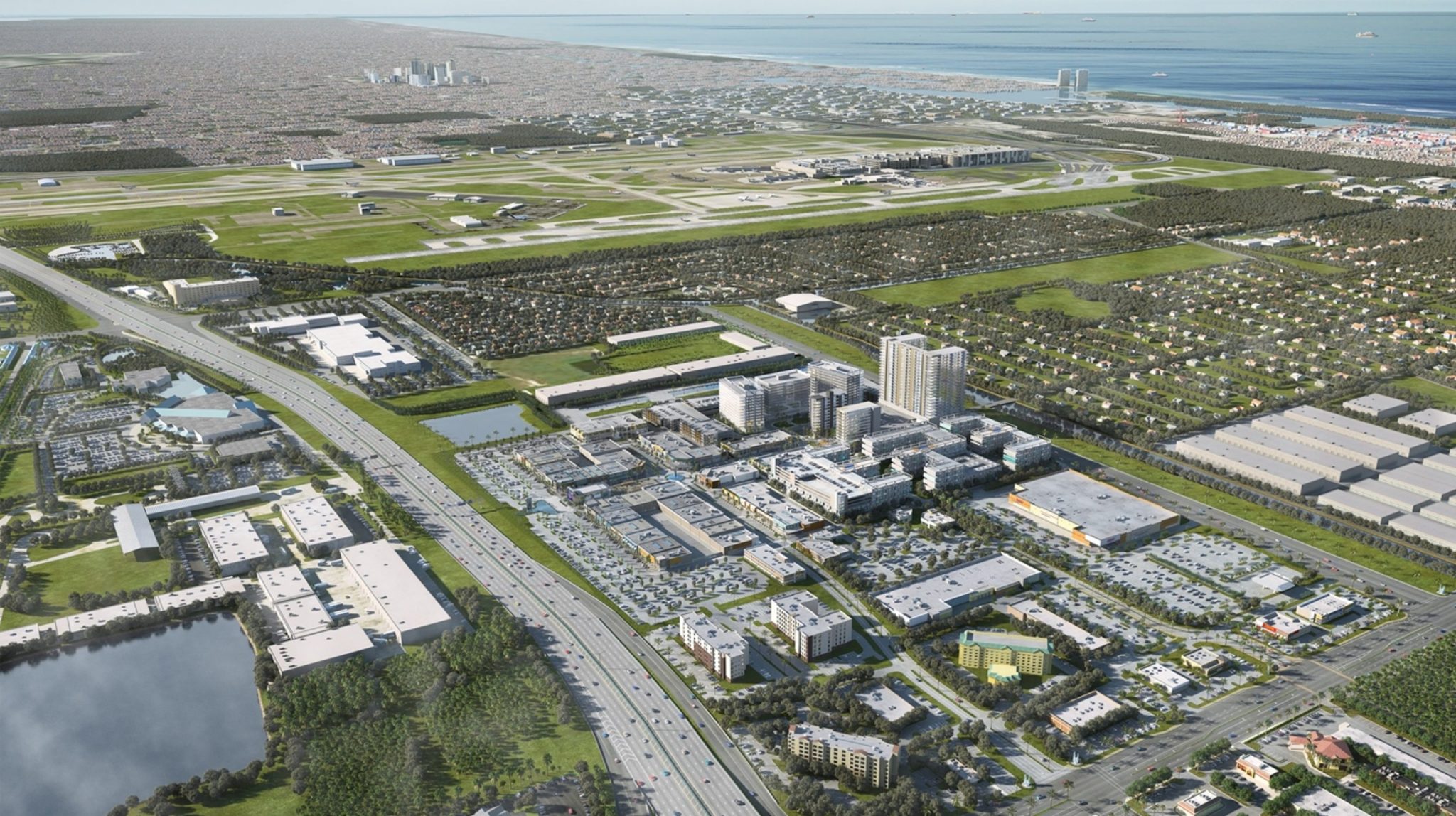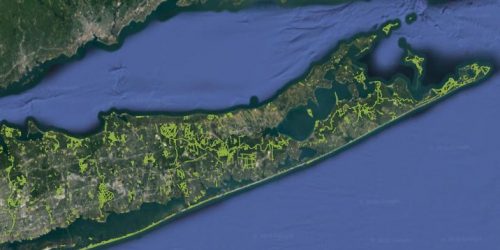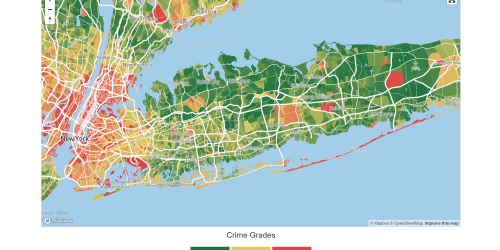Kimco Continues to Transform its Properties & its Portfolio Toward its 2020 Vision

In a timely decision to reinvest in the United States, Kimco completed its divestment from Canada and Mexico to focus solely on its US assets. The goal, as described in its long term strategy plan, is to create “high-quality” properties located primarily in major metro areas. As shown, Kimco completed it’s strategic four year exit from other countries as of this quarter.
 |
 |
Charts: Kimco’s divestment from other countries, which accelerated starting in 2013, has just been completed this quarter. Though GLA (gross leasable area) has decreased, Kimco’s goal is to manage only “high quality” properties with low vacancies and high density regions.
Shedding its foreign properties allows the company to avoid currency fluctuations, foreign political turmoil, allocate management to key metro areas and avoid any new taxes/tariffs put in place by the new administration. “We applaud steps KIM is taking to simplify its business model” said S&P analyst C. Seifert, who was impressed with Kimco’s efforts to reduce its exposure to certain overseas markets and joint ventures.
While the company’s ambitions are clear, the it still faces many challenges during its transformation. First, the company must carefully redistribute the funds from the sale of its final foreign assets. Closing out 2016, the company sold off its final three properties in Mexico, one in Chile and 27 in Canada, generating $417 million for the company. However, for the year, sales of 34 Canadian centers have grossed the company nearly $895 million.
One of the properties Kimco recently sold, Galerias Rio Sonora in Mexico, perfectly demonstrates why the company made an exit from foreign properties. Viewing the property from street view, it becomes clear that the property, though impressive in scale and luxury, is not surrounded by the high income suburban density that Kimco’s 2020 plan describes. Additionally, the elevated security posts in the parking lot are staffed, unlike many in America which are only present for perceived security, suggesting higher crime levels. Continuing up the road, vacant buildings dot the largely undeveloped landscape.
Kimco will allocate the proceeds from the sales of each property toward acquiring high quality properties, choosing sites in prime locations for mixed-use development and revitalizing aging properties. Kimco does, however, already lease a small number of offices, usually situated above conventional retail outlets but these properties were always ones they acquired rather than built from the ground up. This is the first time the company will, from the ground up, enter the residential and commercial office markets.
Image: Kimco has already secured between 13 and 79 percent of leases for their development properties despite estimated completion dates reaching into 2021. This validates the company’s interest in the retail market despite growing sector turmoil. However, in the same image, the company acknowledges the shift toward providing residential and commercial office space in order to create desirable consumer spaces. (Source: Kimco First Quarter 2017 Supplemental)
Kimco is now developing residential towers, office buildings and entertainment centers in addition to its retail centers. Above, Kimco outlines its estimated costs for ground up development, costing upwards of $674 million to develop six properties. By developing these properties, Kimco expects to add 2.5 million square feet of leasable area, 235,000 sq. ft. of which will be residential. Kimco is banking on the idea that people will live in company owned apartments, purchase most of their products in company leased retail stores and potentially work in company leased offices.
This is more commonly known as the “Live, Work & Play Environment,” as stated on the company website. With 72 percent of the company’s annual base rent sourced from shopping centers that already have grocery store anchors, Kimco sees an opportunity to revitalize its centers to reflect this holistic approach of consumerism.
Reflecting upon Kimco’s 2020 Vision strategy, analyst Edward Mui from Morningstar notes that, “The simpler, quality-focused strategy will better support long-term demand and decrease risk for the company’s portfolio, ultimately benefiting investors.” He continues to explain that in the near term, the company’s large developments and frequent disposal and acquisition of properties will lead to balance sheets that might appear to be worrisome to investors who are not aware of the company’s plan.
Kimco planned five sites for development and five sites for revitalization. In recent years, Kimco completed the redevelopment of 13 sites. All the sites, as stated on the plan, are in major metropolitan areas such as Houston, Baltimore and New York City.
One of the more challenging tasks the company faces is selecting properties to acquire and dispose of. While it’s easy to look at current lease revenue and tenant occupancy, it’s extremely complicated to estimate the return on a property given the investment to redevelop the space. Kimco owns two properties that perfectly demonstrate this dilemma.
 |
Jericho Atrium, a moderately sized office complex located on Long Island, does not fit the company’s vision of “high-quality” mixed use retail space. However, it is well leased and has a large parking lot for potential future development. |
 |
Another property on Long Island, recently acquired by Kimco, is the Milleridge Inn. The property features a restaurant, catering hall and a small “colonial” village that includes a number of boutique shops. As a property that carries historic designation, Kimco is extremely limited in its redevelopment but it explored building a hotel or an assisted living community on the property. |
Dania Pointe, the company’s most extensive project thus far, is located in the Fort Lauderdale metro area. There, Kimco is building a massive mixed use development on the site of an old wooden roller coaster park. It will build 1,100 residential units, two hotels 750,000 square feet of office space and nearly one billion square feet of retail and restaurant space. The space is adjacent to a property Kimco already owns, making it the company’s largest presence in a single community in the country.
Though it sold close to a billion dollars in real estate this year, the company has just $140 million of cash on hand. The company’s biggest challenge will be to make sure it has sufficient funding for all its projects in addition to all its current liabilities. Luckily for Kimco, the company has just entered into a revolving credit agreement for $2.25 billion from 19 major financial institutions.
Investors, thus far, have not been convinced that the strategic plan will succeed. Shares dropped to another 52-week low this week despite the company posting in-line earnings per share. Valueline analyst Frederick L. Harris commented that, “We attribute that price move, to a certain degree, to less-than-ideal business conditions in the retail store industry.” Harris continued, arguing that the company now has effectively no foreign exposure but, “We like this strategy, since business prospects there don’t seem to be as decent as in the United States.”
Shares dropped to another 52-week low this week despite the company posting in-line earnings per share.







